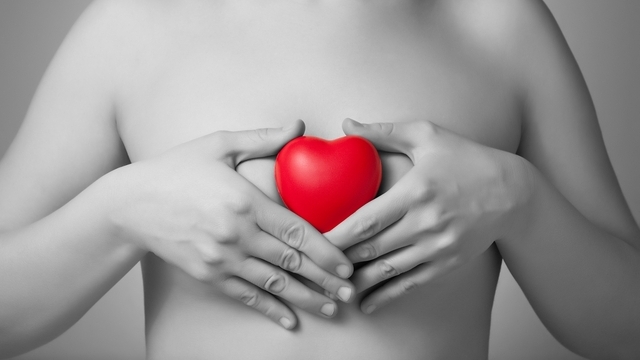 Photo: Getty Images
Photo: Getty Images
A new technique using tissue from those below-the-waist "love handles" improves cosmetic breast reconstruction in slim, athletic cancer patients without adequate fat sources elsewhere, reported a small Johns Hopkins study. The method also turns out to be less complicated than other options for surgeons, the research shows.
"If you're not a candidate for an abdominal flap and you want to use your own tissue, you're not without options,” said Ariel N. Rad, M.D., Ph.D., an assistant professor of cosmetic surgery and plastic and reconstructive surgery at the Johns Hopkins University School of Medicine and one of the lead researchers.
Plastic and reconstructive surgeons from the Johns Hopkins University School of Medicine described the procedure they developed in a paper published in the online version of the journal Microsurgery, based on their work on cadavers and 12 breast cancer patients.
“When implants aren't used, the most common technique for reconstructing breasts after a mastectomy is to make breast tissue from a flap of fat and skin from the abdominal region,” said Rad. “However, thin, athletic women don't have enough tissue there. We found they often have some excess fatty tissue in that space between the hip and waist. For them, using those love handles is a new option.”
Traditionally, the best alternative to the "tummy-tuck" option for thin women has been a flap of skin and fat from the buttocks. While safe and effective, SGAP— named for the use of the superior gluteal artery perforator— is usually deforming. It requires a large chunk of tissue to be removed from the buttocks, which flattens its usual rounded appearance.
Women who undergo SGAP often require follow-up surgery to reshape the buttocks. The procedure is also difficult for surgeons since it typically provides a piece of tissue whose blood vessel length is shorter than needed to connect to a vessel in the chest, Rad said.
The surgeons came up with the idea of using the love handles when they noticed a blood vessel underneath the buttocks while doing an SGAP procedure. After dissecting a few cadavers and using CT scanning, the team determined the vessel was available in about 60 percent of patients.
When they performed the new procedure on 12 patients at Johns Hopkins from February 2008 to February 2009, the surgeons found the length of vessel needed to connect to mammary blood vessels tended to be twice as long as those used in SGAP. When the tail of the blood vessel is longer, as in the LSGAP surgery, it is easier for the surgeon to carefully connect the two tiny tubes together. That made the new surgery less complicated to perform, Rad said.
All 12 of the study patients underwent successful breast reconstruction using the new version of the SGAP, known as the LSGAP (lateral septocutaneous perforating branches of the superior gluteal artery).
The operation is performed with the help of a microscope and connects small blood vessels from a flap composed of skin and fat from the love-handle region to the mammary blood vessels beneath the rib cage.
Surgeons used the new vessel in about half of the procedures, but were able to achieve a good cosmetic result in all of them, Rad said. However, he cautioned not every thin patient is a candidate for the new technique. "But those for whom it is available, LSGAP actually improves the contour of the patient's waist and hip area," he said.
Lynette Summerill is an award-winning writer who lives in Scottsdale, Arizona. In addition to writing about cancer-related issues for EmpowHER, she pens Nonsmoking Nation, a blog following global tobacco news and events.





Add a CommentComments
There are no comments yet. Be the first one and get the conversation started!